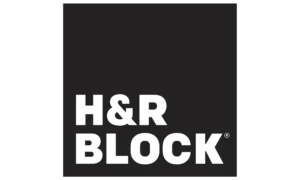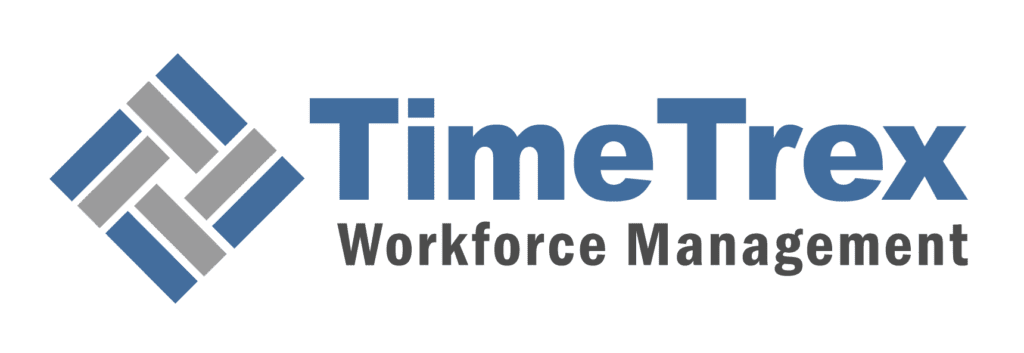Free Nebraska Payroll Tax Calculator

Nebraska Payroll Tax Calculator: A Step-by-Step Guide
Understanding your take-home pay is essential for managing your finances. Our Nebraska Payroll Tax Calculator is designed to provide a clear estimate of your net pay by walking you through a few simple steps.
Step 1: Enter Your General Information
Begin by inputting your location and personal details to ensure an accurate calculation.
- Country: Ensure “United States” is selected. (This field is pre-filled.)
- State: Choose “Nebraska” from the dropdown menu. (This field is pre-filled.)
- Federal Filing Status: Select your current federal filing status (e.g., Single, Married Filing Jointly, Head of Household) from the dropdown menu. This status is based on your federal tax return.
- Federal Allowances: Enter the number of federal allowances you claim on your Form W-4. This number helps determine the amount of federal income tax withheld from your paycheck.
Step 2: Input Your Nebraska-Specific Tax Information
Next, provide the details specific to Nebraska’s income tax withholding.
- State Filing Status: Select your Nebraska filing status. For state withholding purposes, you will choose either “Single” or “Married.” If you file as “Head of Household” on your federal return, you should select “Single” for Nebraska withholding.
- State Withholding Allowances: Enter the number of allowances you are claiming for Nebraska state income tax. This information can be found on your Nebraska Form W-4N, the “Nebraska Withholding Allowance Certificate.” The number of allowances you claim will directly impact the amount of state tax withheld.
Step 3: Provide Your Pay Information
Enter your earnings and pay frequency to calculate your gross and net pay for each pay period.
- Gross Wage / Pay Period: Input your total earnings for a single pay period before any taxes or deductions are taken out.
- Annual Pay Periods: Select how often you are paid (e.g., Weekly, Bi-Weekly, Monthly) from the dropdown menu. This is crucial for accurate tax calculations.
- Pay Date: Select the date you will receive your paycheck using the calendar. While this does not affect the calculation, it is useful for your records.
Step 4: Calculate and Review Your Results
After entering all the necessary information, click the “Calculate” button to see a detailed breakdown of your estimated paycheck.
- Carefully review the calculated amounts for federal and state taxes, as well as your estimated net pay.
- If you need to make adjustments to your filing status, allowances, or pay information, simply change the relevant fields and click “Calculate” again.
- To begin a new calculation with different information, use the “New Calculation” button.
Important Notes:
- This calculator provides an estimate based on the information you enter and the current Nebraska tax rates and regulations.
- Your actual take-home pay may differ due to factors such as pre-tax deductions for retirement plans (like a 401(k)), health insurance premiums, and any other voluntary deductions.
- It is recommended to keep your federal Form W-4 and Nebraska Form W-4N updated with your employer to ensure the most accurate tax withholding throughout the year. Nebraska does not have any local income taxes.
Found our Free Nebraska Payroll Tax Calculator useful? Bookmark and share it.
Nebraska Payroll Tax: A 2025-2027 Analysis for Employers
TL:DR
The year 2025 marks a period of profound transformation for Nebraska's payroll tax and employment landscape, presenting businesses with a complex mixture of significant tax relief, new compliance mandates, and heightened administrative intricacy. Employers navigating this environment must look beyond headline rate reductions to understand the full scope of changes impacting their operational and financial strategies. This report provides a comprehensive analysis of the evolving Nebraska payroll tax system, offering a strategic roadmap for 2025 and beyond.
The current environment is defined by three concurrent and powerful drivers of change. First, the state is in the midst of an aggressive, multi-year income tax overhaul, legislated by Legislative Bill (LB) 754. This bill is systematically lowering individual and corporate income tax rates with the ultimate goal of establishing a competitive 3.99% flat tax by 2027. For 2025, this means employers will implement new, lower withholding rates as the state continues down this path.
Second, and in stark contrast to the simplification of income tax, the State Unemployment Insurance (SUI) system has been made significantly more complex for 2025 by the passage of LB 297. This legislation creates a counterintuitive scenario where a superficial rate reduction is coupled with a quadrupling of the non-creditable portion of SUI taxes diverted to a state-level trust fund. This structural change alters how employer contributions are accounted for, impacts federal tax credit calculations, and may obscure the true cost of unemployment taxes for many businesses.
Third, a major new compliance regime, the Nebraska Healthy Families and Workplace Act (NHFWA), becomes effective on October 1, 2025. This voter-approved mandate requires most employers to provide paid sick leave, introducing a substantial new administrative burden. Businesses must develop new policies, implement tracking systems for leave accrual and usage, and ensure their payroll processes can handle these new requirements.
The confluence of these developments creates a paradoxical situation for Nebraska employers. While the direct cost of income tax is falling, the total cost of compliance—encompassing payroll system updates, new policy administration, and navigating a more complex SUI system—is unequivocally rising. This report will dissect each of these components in detail, providing the necessary data, analysis, and forward-looking perspective for businesses to make informed strategic decisions in this dynamic environment.
The Macro Environment: Legislative Revolution and Fiscal Realities
To effectively manage payroll and human resources in Nebraska, it is essential to understand the broader legislative and fiscal forces shaping the state's policies. The changes occurring in 2025 are not isolated events but are the result of a deliberate, and at times conflicting, set of strategic decisions and public mandates. This section analyzes the intent behind the major legislative acts, the underlying fiscal health of the state, and the arrival of a significant new employment law.
The "Flat Tax" Trajectory: Deconstructing LB 754
The centerpiece of Nebraska's recent tax policy transformation is Legislative Bill 754, a sweeping package signed into law in 2023. This legislation represents a fundamental shift in the state's approach to taxation, driven by a stated goal of enhancing economic competitiveness by lowering and simplifying its primary tax structures.
The core mechanism of LB 754 is a phased-in reduction and consolidation of Nebraska's individual and corporate income tax rates. Under the law, the state's progressive individual income tax structure, which featured a top rate of 6.64% in 2023, is systematically dismantled over a four-year period. The ultimate objective is to arrive at a nearly flat tax of 3.99% by tax year 2027. This aggressive rate reduction schedule is mirrored on the corporate side, where a two-tiered system is also being consolidated into a single 3.99% flat rate over the same period, signaling a unified strategic direction.
However, LB 754's scope extended beyond mere rate cuts. It was an omnibus bill that incorporated several other significant tax policy changes, including an accelerated timeline for the full exemption of Social Security benefits from state taxation, the creation of new refundable and nonrefundable tax credits for child care, and the adoption of new rules for taxing remote workers. The comprehensive nature of LB 754 underscores a broad legislative consensus to fundamentally reshape Nebraska's tax code to be more attractive for individuals and businesses.
From Surplus to Shortfall: The State's Budgetary Outlook
The ambitious tax cuts enacted in LB 754 were passed during a period of unusual fiscal strength for Nebraska. However, this strength was largely attributable to a temporary influx of federal pandemic relief funds, which created a one-time revenue windfall, rather than a sustainable increase in organic state revenue growth.
This has created a precarious fiscal situation. As the temporary federal aid dissipates, the state's budget is transitioning from an apparent surplus to a structural shortfall. The permanent, recurring revenue reductions from the tax cuts are now confronting a return to normal revenue levels, creating an imbalance. To address the immediate budget gap, state lawmakers have thus far avoided pausing the scheduled tax cuts. Instead, they have opted for short-term solutions, such as implementing flat budgets for most state agencies and transferring approximately $150 million from various cash funds, including the state's rainy day fund, to cover expenses.
This dynamic introduces a significant element of risk and uncertainty into the long-term tax outlook. While the path to a 3.99% tax rate is currently enshrined in statute, its fiscal sustainability is questionable. Businesses making long-term investment decisions in Nebraska must weigh the appeal of the legislated tax cuts against the risk that future budget pressures could force lawmakers to reverse course or seek revenue from other sources.
The New Compliance Frontier: The Nebraska Healthy Families and Workplace Act (NHFWA)
Concurrent with the state's efforts to reduce tax burdens, a significant new regulatory mandate is being imposed on employers. In November 2024, Nebraska voters passed Initiative 436, creating the Nebraska Healthy Families and Workplace Act (NHFWA). This act requires most employers in the state to provide earned paid sick time (PST) to their employees, with the law taking effect on October 1, 2025. Following the passage of the initiative, the Nebraska Legislature passed LB 415 in June 2025 to clarify and amend several provisions of the original act. These amendments are critical for employers to understand as they narrow the law's scope and define key compliance parameters.
| Provision | Details of the Amended NHFWA |
|---|---|
| Employer Coverage | Exempts small employers with fewer than 11 employees. Establishes two tiers for covered employers. |
| Accrual and Caps | Employees earn 1 hour of PST for every 30 hours worked. Employers with 20+ employees can cap accrual and use at 56 hours/year. Employers with 11-19 employees can cap accrual and use at 40 hours/year. |
| Waiting Period | New employees begin to accrue PST after working for 80 consecutive hours in Nebraska. |
| Carryover | Employees can carry over unused PST to the next year, but this does not increase the annual usage caps. |
| Employer Obligations | Provide written notice to all employees by September 15, 2025. Display a poster in a conspicuous worksite location (electronic notice is permissible for remote workers). |
The introduction of the NHFWA represents a major new operational challenge for Nebraska employers. It necessitates the development of new HR policies, the implementation of robust payroll systems capable of tracking PST accrual and usage in fractions of an hour, and careful recordkeeping to ensure compliance and avoid administrative penalties. This new mandate stands in stark contrast to the tax-cutting agenda, adding a significant layer of regulatory complexity and cost to the Nebraska business environment.
Deep Dive: State Income Tax (SIT) Withholding
The core of Nebraska's payroll tax system is the mandatory withholding of state income tax (SIT) from employee wages. As a result of LB 754, this system is undergoing a significant, multi-year transition designed to lower the overall tax burden and simplify the rate structure. This section provides a definitive guide to the 2025 withholding requirements, the projected changes for future years, and the specific rules governing special employment situations.
2025 Income Tax Withholding: Rates, Brackets, and Calculations
For tax year 2025, Nebraska employers must implement a new set of withholding rates and brackets as dictated by the ongoing phase-in of the LB 754 tax cuts. It is critical for employers to use the correct 2025 figures, as some sources may contain outdated information from previous years. The authoritative structure for 2025, as established by law and published by the Nebraska Department of Revenue, features four tax brackets with a top marginal rate of 5.20%.
All withholding calculations for wages paid on or after January 1, 2025, must be based on the tables and formulas provided in the 2025 Nebraska Circular EN. This official document from the Department of Revenue is the primary source of guidance for employers and contains the two approved methods for determining withholding: the Wage-Bracket Method and the Percentage Method. For payments considered supplemental wages, such as bonuses or commissions, a flat withholding rate of 5.00% applies.
| Tax Year | Filing Status | Taxable Income Bracket | Marginal Tax Rate |
|---|---|---|---|
| 2024 | Single | $0 - $2,999 $3,000 - $17,999 $18,000 - $28,999 $29,000 and over |
2.46% 3.51% 5.01% 5.84% |
| Married Filing Jointly | $0 - $5,999 $6,000 - $35,999 $36,000 - $57,999 $58,000 and over |
2.46% 3.51% 5.01% 5.84% |
|
| 2025 | All Filers | Bracket 1 Bracket 2 Bracket 3 Bracket 4 |
2.46% 3.51% 5.01% 5.20% |
| Note: The Nebraska Department of Revenue provides detailed income thresholds for each bracket and filing status in the annual Circular EN. The 2025 rates shown above reflect the statutory changes from LB 754. | |||
The Road to 3.99%: Projecting SIT Changes for 2026 and 2027
The changes for 2025 are just one step in a multi-year plan. Businesses must anticipate further adjustments to their payroll systems in the coming years as Nebraska continues its legislated march toward a flat tax. The statutory path laid out by LB 754 mandates the following key changes:
- For Tax Year 2026: The top two income tax brackets (Bracket 3 and Bracket 4) will be consolidated into a single top bracket. The marginal tax rate for this new, broader top bracket will be reduced to 4.55%.
- For Tax Year 2027: The rate for the top bracket will be reduced again, to 3.99%. At this point, the tax system will effectively function as a two-rate structure (2.46% on the lowest income and 3.99% on all income above that threshold), achieving the legislature's goal of a low, nearly flat tax.
This multi-year transition requires businesses to adopt a forward-looking approach to payroll compliance. It is not a "one-and-done" update for 2025. Employers must plan for system updates, testing, and employee communications for January 2026 and January 2027 to ensure withholding calculations remain accurate as the rate structure evolves.
Navigating Special Scenarios: Nonresidents and Remote Workers
Effective January 1, 2025, Nebraska has implemented a new, more nuanced set of rules for income sourcing and withholding for nonresident employees. These rules, detailed in the 2025 Circular EN, replace older, simpler thresholds and require a more careful analysis by employers with a mobile or remote workforce.
The new framework establishes a specific safe harbor for short-term work in the state. Nebraska income tax withholding is not required for wages paid to a nonresident employee if all of the following conditions are met:
- The employee is physically present and earning wages in Nebraska for seven days or less during the taxable year.
- The purpose of the work in Nebraska is for the employee to attend a conference or training.
- The employee earned wages for work performed in more than one state during the year.
- The total wages earned for the work physically performed in Nebraska are $5,000 or less.
Conversely, the state has adopted a "convenience of the employer" rule that introduces new complexity for remote work arrangements. Under this rule, compensation paid to a nonresident for services performed outside of Nebraska can be considered Nebraska-sourced income if two conditions are met: 1) the services are performed for the nonresident's convenience, and 2) the work is directly related to a business carried on in Nebraska and could have been performed within the state. If a nonresident employee works more than seven days in Nebraska and is also subject to this convenience rule, the employer is required to withhold Nebraska income tax, but only on the portion of wages paid for services physically performed within Nebraska.
This is a significant departure from simpler physical presence tests and requires employers to analyze the underlying reason for an employee's remote work status to determine the proper tax sourcing and withholding obligations. Additionally, a specific exemption remains for spouses of active-duty military members, who may file a Form 9N, Nebraska Nonresident Employee Certificate for Allocation of Income Tax Withholding, with their employer to claim an exemption from withholding.
Administrative Essentials: Circular EN and Form W-4N
Two documents are fundamental to administering Nebraska SIT withholding correctly:
- Nebraska Circular EN: This is the authoritative annual guide published by the Department of Revenue. It contains the official wage-bracket tables, percentage method calculation formulas, and detailed instructions that employers are legally required to use for withholding.
- Form W-4N, Employee's Nebraska Withholding Allowance Certificate: This is the state-level equivalent of the federal Form W-4. Employees must complete this form to declare their marital status and the number of withholding allowances they wish to claim for state tax purposes. The information on this form is essential for the employer to calculate the correct amount of tax to withhold.
Deep Dive: State Unemployment Insurance (SUI) Tax
While Nebraska's income tax system is on a path toward simplification, its State Unemployment Insurance (SUI) tax system has become substantially more complex for 2025. Recent legislation has created a paradoxical environment where headline rates appear to decrease, but the underlying cost structure and administrative requirements have become more burdensome. Understanding these nuances is critical for accurate budgeting and compliance.
The 2025 SUI Paradox: Unpacking LB 297
On March 25, 2025, Governor Jim Pillen signed into law Legislative Bill 297, which retroactively restructured the SUI tax calculation for the 2025 calendar year. This law, framed as a $44 million tax cut for employers, introduced several counterintuitive changes.
First, instead of applying a newly calculated rate schedule for 2025, LB 297 mandates that employers revert to the 2024 rate schedule. While each employer remains in the experience-rated category they were assigned for 2025, the actual tax rate applied to their taxable wages is the rate that was associated with that category in 2024. For 2025 only, the law also statutorily fixes the rate for Category 12 (the state's average rate) at 0.48%, which serves as the anchor for calculating rates in other categories.
The most significant and complex change, however, is a massive increase in the portion of taxes diverted away from an employer's individual account. The "combined tax" in Nebraska is composed of two parts: a contribution that funds an employer's own experience-rated reserve account, and a State Unemployment Insurance Tax (SUIT) that is diverted to a general state fund. For 2025, the SUIT allocation has been quadrupled from 5% to 20% of the total combined tax due. This means that while an employer's headline "combined rate" may have decreased, the portion of that payment that actually benefits their own experience rating has shrunk considerably.
Calculating Your Combined Rate: SUI Contributions vs. the SUIT Fund Diversion
The 80/20 split between SUI contributions and the SUIT fund diversion is a critical concept for employers to grasp in 2025. It directly affects an employer's experience rating and federal tax filings.
For every dollar of "combined tax" paid, only 80 cents is credited to the employer's individual reserve account, which is used to pay benefits to their former employees and determines their future tax rate. The remaining 20 cents is diverted to the state's SUIT fund, a separate reserve pool that provides no direct benefit to the employer's experience rating.
Example Calculation:
- An employer is assigned a 2025 combined tax rate of 1.00%.
- The SUI contribution portion (credited to the employer's account) is 1.00% × 0.80 = 0.80%.
- The SUIT diversion portion (sent to the state fund) is 1.00% × 0.20 = 0.20%.
This distinction has a direct impact on federal tax compliance. When completing the annual Federal Form 940, Employer's Annual Federal Unemployment (FUTA) Tax Return, Nebraska employers can only report the 80% portion of their payments as creditable SUI contributions for 2025. This adds a layer of complexity to the FUTA credit calculation that does not exist in most other states.
| Rate Category | 2025 Combined Tax Rate (2024 Schedule) | Portion Credited to Employer Account (80%) | Portion Diverted to SUIT Fund (20%) |
|---|---|---|---|
| 1 | 0.00% | 0.00% | 0.00% |
| 2 | 0.12% | 0.096% | 0.024% |
| 3 | 0.19% | 0.152% | 0.038% |
| 4 | 0.21% | 0.168% | 0.042% |
| 5 | 0.24% | 0.192% | 0.048% |
| 6 | 0.28% | 0.224% | 0.056% |
| 7 | 0.31% | 0.248% | 0.062% |
| 8 | 0.33% | 0.264% | 0.066% |
| 9 | 0.38% | 0.304% | 0.076% |
| 10 | 0.43% | 0.344% | 0.086% |
| 11 | 0.45% | 0.360% | 0.090% |
| 12 | 0.48% | 0.384% | 0.096% |
| 13 | 0.50% | 0.400% | 0.100% |
| 14 | 0.52% | 0.416% | 0.104% |
| 15 | 0.57% | 0.456% | 0.114% |
| 16 | 0.64% | 0.512% | 0.128% |
| 17 | 0.74% | 0.592% | 0.148% |
| 18 | 0.86% | 0.688% | 0.172% |
| 19 | 1.03% | 0.824% | 0.206% |
| 20 | 5.40% | 4.320% | 1.080% |
The Mechanics of Experience Rating
An employer's SUI tax rate is determined by their individual experience. The state maintains a 20-category system, and each year, employers are ranked and assigned to a category based on their reserve ratio. This ratio is a formula that compares the contributions an employer has paid into their account against the unemployment benefits that have been charged to their account, relative to their average taxable payroll. A history of frequent layoffs resulting in benefit claims will lead to a lower reserve ratio and assignment to a higher-cost tax category.
For businesses new to the state, an experience rating has not yet been established. These employers are assigned a standard new employer rate. For 2025, these rates are unchanged:
| Employer Type | 2025 New Employer SUI Rate | Applicable Taxable Wage Base |
|---|---|---|
| Non-Construction | 1.25% | $9,000 |
| Construction | 5.40% | $9,000 |
Following the passage of LB 297, the Nebraska Department of Labor reissued SUI rate notices for 2025 in March and April. Employers must ensure they are using the rate from this revised notice for their quarterly filings.
The Dual-Threshold Taxable Wage Base
A unique feature of Nebraska's SUI system is its dual-threshold taxable wage base. The amount of an employee's annual wages subject to SUI tax depends on the employer's rate category.
- Standard Taxable Wage Base: For the vast majority of employers, those in rate categories 1 through 19, the SUI tax is applied to the first $9,000 of each employee's wages for the calendar year.
- High-Cost Taxable Wage Base: For employers assigned to the highest-cost Category 20, which includes those with the worst experience ratings and employers who are delinquent in filing their tax reports, the taxable wage base is significantly higher at $24,000.
This structure creates a substantial financial penalty for falling into the highest rate category. An employer in Category 20 not only pays the highest rate (5.40%) but must apply that rate to nearly three times the amount of wages per employee compared to an employer in Category 19. This creates a powerful incentive for employers to manage their unemployment claims diligently and to make voluntary contributions if doing so would prevent them from being assigned to Category 20.
Federal Payroll Tax Obligations in Nebraska
While state-level tax laws are undergoing significant change, Nebraska employers remain subject to a stable set of federal payroll tax obligations. These federal taxes are administered by the Internal Revenue Service (IRS) and apply to employers nationwide. They consist of FICA taxes, which fund Social Security and Medicare, and FUTA taxes, which fund the federal unemployment insurance system.
FICA Compliance for 2025: Social Security and Medicare
The Federal Insurance Contributions Act (FICA) mandates contributions from both employees and employers to fund the nation's primary social insurance programs.
| FICA Component | Employee Rate | Employer Rate | 2025 Wage Base Limit |
|---|---|---|---|
| Social Security | 6.2% | 6.2% | $176,100 |
| Medicare | 1.45% | 1.45% | None |
| Additional Medicare Tax | 0.9% (on wages > $200,000) | N/A | N/A |
Social Security Tax: For 2025, the Social Security tax rate is 6.2% for both the employee and the employer. This tax is applied to an employee's wages up to the maximum annual wage base of $176,100. The maximum Social Security tax that can be withheld from an employee's pay for 2025 is $10,918.20, an amount which the employer must match.
Medicare Tax: The Medicare tax rate for 2025 is 1.45% for both the employee and the employer. Unlike Social Security, there is no wage limit for the Medicare tax; it applies to all of an employee's covered earnings.
Additional Medicare Tax: A provision of the Affordable Care Act requires an additional withholding of 0.9% from an employee's wages that exceed $200,000 in a calendar year. This is an employee-only tax; there is no employer match.
FUTA and the SUI Credit
The Federal Unemployment Tax Act (FUTA) establishes a federal unemployment insurance program that works in partnership with state programs.
FUTA Tax Rate and Wage Base: The FUTA tax is an employer-only tax. For 2025, the rate is 6.0% and is applied to the first $7,000 of each employee's annual wages.
The FUTA Credit: The FUTA system is designed to incentivize states to maintain solvent unemployment programs and to encourage employers to pay their state unemployment taxes in a timely manner. Employers can receive a tax credit of up to 5.4% against their FUTA liability. For an employer who qualifies for the maximum credit, the effective FUTA tax rate is reduced from 6.0% to just 0.6%.
As noted previously, the unique 80/20 split of Nebraska's 2025 SUI tax adds a layer of complexity to this calculation. Because only 80% of the combined tax payment is considered a creditable SUI contribution for federal purposes, employers must ensure their payroll and tax accounting systems are configured to report this amount correctly on the annual Form 940 to substantiate their FUTA credit.
The Employer's Compliance and Administrative Roadmap
Navigating Nebraska's payroll tax landscape requires a clear understanding of the state's administrative procedures. Compliance hinges on proper registration with the correct state agencies, adherence to a strict calendar of filing and payment deadlines, and the use of specific state-mandated forms. This section provides a practical roadmap for employers to manage these essential obligations.
Step-by-Step Registration with State Agencies
A common point of confusion for new employers is that payroll tax administration in Nebraska is split between two separate state agencies. Businesses must register with both to be fully compliant.
- Nebraska Department of Revenue (DOR): This agency is responsible for administering the state's income tax withholding system. Any business that pays wages to employees in Nebraska must register with the DOR to obtain a Nebraska Tax ID number, also known as a State Employer Identification Number. Registration can be completed online through the DOR's website.
- Nebraska Department of Labor (DOL): This agency manages the state's unemployment insurance (SUI) program. Employers must complete a separate registration with the DOL to obtain a Nebraska Employer Account Number and receive their annual SUI tax rate. This registration can also be done online through the DOL's NEworks portal.
A Calendar of Critical 2025 Filing and Deposit Deadlines
Adherence to deadlines is crucial for avoiding penalties and interest. Nebraska's payroll tax system involves a mix of monthly, quarterly, and annual deadlines. While returns are generally filed quarterly, tax payments are most often due monthly.
| Due Date | Form/Report | Description | Responsible Agency |
|---|---|---|---|
| January 31, 2025 | Form W-3N & W-2s | Annual Reconciliation of 2024 Income Tax Withheld and W-2 submission. | DOR |
| January 31, 2025 | Form 941N | Quarterly Withholding Return for Q4 2024. | DOR |
| January 31, 2025 | SUI Tax & Wage Report | Quarterly Unemployment Report for Q4 2024. | DOL |
| Monthly, by the 15th | Form 501N | Monthly Withholding Deposit for the previous month's tax. | DOR |
| April 30, 2025 | Form 941N / SUI Report | Quarterly Withholding & Unemployment Reports for Q1 2025. | DOR / DOL |
| July 31, 2025 | Form 941N / SUI Report | Quarterly Withholding & Unemployment Reports for Q2 2025. | DOR / DOL |
| October 31, 2025 | Form 941N / SUI Report | Quarterly Withholding & Unemployment Reports for Q3 2025. | DOR / DOL |
| January 31, 2026 | Form 941N / SUI Report | Quarterly Withholding & Unemployment Reports for Q4 2025. | DOR / DOL |
| Note: If a due date falls on a weekend or state holiday, the filing deadline is extended to the next business day. Consult the official DOR tax calendar for a complete list. | |||
A Guide to Essential Reporting Forms
Successful payroll administration requires familiarity with a specific set of state forms:
Income Tax Withholding (DOR):
- Form 941N: The quarterly return to report total wages paid and income tax withheld.
- Form 501N: The coupon used to remit monthly payments of withheld income tax.
- Form W-3N: The annual reconciliation of income tax withheld.
- Form W-4N: The form employees use to set their state withholding allowances.
Unemployment Insurance (DOL):
- UI Form 11T (Combined Tax Report) & UI Form 11W (Wage Report): The primary quarterly reports for SUI tax.
Furthermore, Nebraska has specific electronic filing mandates. Employers are required to e-file their W-2 and 1099 forms if filing more than 50. Electronic payment of withholding tax is mandatory if total payments in a prior year exceeded $5,000.
Mandatory New Hire Reporting and Labor Law Postings
Beyond tax filings, employers have other payroll-related reporting and compliance duties.
New Hire Reporting: All Nebraska employers must report every new and rehired employee to the Nebraska State Directory of New Hires within 20 days of their hire date. This system is primarily used to enforce child support orders.
Labor Law Postings: Employers must display posters in a conspicuous location accessible to all employees. For 2025, required posters include Nebraska Minimum Wage ($13.50/hour), Equal Opportunity, Job Safety and Health (OSHA), and Unemployment Insurance Rights. A new poster for the Nebraska Healthy Families and Workplace Act is also required, and written notice of this law must be given to employees by September 15, 2025.
Regional Tax Competitiveness Analysis
Nebraska's aggressive tax reforms are a direct response to intense tax competition among states, particularly in the Midwest. Benchmarking its payroll tax landscape against its neighbors reveals that while Nebraska is making significant strides in income tax competitiveness, the overall picture is more nuanced.
Nebraska vs. The Neighbors: A Comparative Payroll Tax Analysis
| Feature | Nebraska | Iowa | Missouri | Kansas | Colorado | Wyoming | South Dakota |
|---|---|---|---|---|---|---|---|
| State Income Tax | Progressive, Phased to Flat | Flat Tax | Progressive, Phased to Flat | Progressive | Flat Tax | None | None |
| 2025 Top SIT Rate | 5.20% | 3.80% | 4.70% | 5.70% | 4.40% | 0.00% | 0.00% |
| Future SIT Target | 3.99% by 2027 | Stable | Flat tax planned | Stable | Stable | N/A | N/A |
| SUI Wage Base | $9,000 / $24,000 | $39,500 | $9,500 | $14,000 | $27,200 | $32,400 | $15,000 |
| SUI Rate Range | 0.0% - 5.4% | 0.0% - 7.0% | 0.0% - 6.0% | 0.0% - 6.65% | 0.64% - 8.68% | 0.09% - 8.5% | 0.0% - 9.5% |
| Key Mandates | Paid Sick Leave (Oct 2025) | None | Local Taxes (KC/STL) | None | Paid Family & Medical Leave | None | None |
This comparison reveals several critical strategic points. Nebraska's planned 3.99% income tax rate will make it highly competitive with its income-taxing neighbors. However, Iowa already has a 3.8% flat tax in 2025. On the unemployment insurance front, Nebraska's standard $9,000 taxable wage base is among the lowest in the region, a distinct advantage for employers.
Strategic Implications for Business Location and Remote Workforce Policy
The analysis points to a "flat tax race" in the Midwest. Nebraska's move with LB 754 is a necessary step to remain competitive with states like Iowa and Missouri. However, the most significant competitive pressure continues to come from the "no income tax" states of Wyoming and South Dakota. This makes Nebraska's new, more complex rules on nonresident and remote worker taxation particularly important as the state attempts to protect its tax base.
Furthermore, the introduction of the paid sick leave mandate in Nebraska, a requirement not present in any of its neighboring states except for Colorado (which has a broader Paid Family and Medical Leave program), diminishes some of the state's "business-friendly" appeal. Businesses must now factor in the compliance costs of the NHFWA, which offsets some of the savings from the income tax reductions.
Strategic Recommendations and Forward-Looking Outlook
The current period of intense change in Nebraska's payroll tax and employment law demands a proactive and strategic response from businesses. This final section provides an actionable checklist for employers and offers a forward-looking perspective.
An Actionable Checklist for Nebraska Employers
Immediate Actions (First Half of 2025):
- Verify SUI Rate: Locate the revised 2025 SUI Rate Notice from the NE Department of Labor and update your payroll system.
- Update Withholding Tables: Confirm your payroll system uses the 2025 Circular EN tables.
- Analyze SUIT Impact: Model the cash flow and federal tax implications of the 20% SUIT diversion and prepare accounting procedures for Form 940.
- Begin NHFWA Planning: Start drafting a compliant paid sick leave policy and identify necessary payroll system upgrades.
Mid-Year Actions (Third Quarter 2025):
- Finalize Paid Sick Leave Policy: Have a legally reviewed policy in place well before the October 1 effective date.
- Distribute NHFWA Notice: Prepare and distribute the required written notice to all employees by September 15, 2025.
- Go-Live for PST Tracking: Ensure your payroll system is ready to track paid sick time accrual starting October 1, 2025.
Ongoing and Forward-Looking Actions:
- Review Remote Work Policies: Evaluate remote work arrangements in light of the new nonresident income sourcing rules.
- Plan for Future Tax Changes: Schedule payroll system updates for January 2026 and January 2027.
- Monitor Legislative Activity: Stay informed about state budget discussions and potential future labor mandates.
Forecasting Beyond 2027: Potential for Further Changes
The tax structure established for 2027 is not guaranteed to be permanent. The most significant uncertainty is the state's structural budget deficit. If state revenues underperform, future legislatures could consider freezing tax cuts or expanding the sales tax base. The SUI system's complex 80/20 split may also be a temporary measure. Finally, the success of the paid sick leave initiative could lead to future efforts for other labor mandates, such as a state-level paid family and medical leave program.
Ultimately, Nebraska's true competitiveness will be judged on a broader set of criteria than just income tax rates. Modern businesses and a mobile workforce increasingly weigh the complexity of tax systems, the burden of regulatory compliance, and the stability of the state's fiscal environment. Nebraska has made a bold move on one front, but its journey beyond 2025 will be defined by its ability to manage all of them effectively.
Simplify Your Nebraska Payroll
Feeling overwhelmed by the constant changes in Nebraska's payroll tax laws? TimeTrex can help. Our comprehensive payroll solution automates tax calculations, filings, and payments, ensuring you stay compliant with all state and federal regulations.
Learn More About TimeTrex Payroll ServicesOther Payroll Tax Calculators
Loading other available calculators...
Disclaimer: The content provided on this webpage is for informational purposes only and is not intended to be a substitute for professional advice. While we strive to ensure the accuracy and timeliness of the information presented here, the details may change over time or vary in different jurisdictions. Therefore, we do not guarantee the completeness, reliability, or absolute accuracy of this information. The information on this page should not be used as a basis for making legal, financial, or any other key decisions. We strongly advise consulting with a qualified professional or expert in the relevant field for specific advice, guidance, or services. By using this webpage, you acknowledge that the information is offered “as is” and that we are not liable for any errors, omissions, or inaccuracies in the content, nor for any actions taken based on the information provided. We shall not be held liable for any direct, indirect, incidental, consequential, or punitive damages arising out of your access to, use of, or reliance on any content on this page.
Trusted By
Trusted by 3.2M+ Employees: 21 Years of Service Across Startups to Fortune 500 Enterprises
Join our ever-growing community of satisfied customers today and experience the unparalleled benefits of TimeTrex.










Strength In Numbers
Join The Companies Already Benefiting From TimeTrex
Time To Clock-In
Start your 30-day free trial!
Experience the Ultimate Workforce Solution and Revolutionize Your Business Today
- Eliminate Errors
- Simple & Easy To Use
- Real-time Reporting

Saving businesses time and money through better workforce management since 2003.
Copyright © 2025 TimeTrex. All Rights Reserved.
